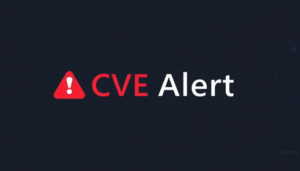CVE Alert: CVE-2025-12863 – Red Hat – Red Hat Enterprise Linux 10
CVE-2025-12863
A flaw was found in the xmlSetTreeDoc() function of the libxml2 XML parsing library. This function is responsible for updating document pointers when XML nodes are moved between documents. Due to improper handling of namespace references, a namespace pointer may remain linked to a freed memory region when the original document is destroyed. As a result, subsequent operations that access the namespace can lead to a use-after-free condition, causing an application crash.
AI Summary Analysis
Risk verdict
High risk: remote, unauthenticated exploitation could trigger a denial-of-service on affected systems; no active exploitation indicators are evident in the provided data.
Why this matters
libxml2 is a core parsing library used across many services; a successful use-after-free could crash the parsing process, causing outages in XML-dependent web, middleware and container environments. For payloads that touch exposed XML endpoints, this can lead to service degradation or downtime with potential cascading business impact.
Most likely attack path
Attackers would send crafted XML over the network to a vulnerable service that uses libxml2, with no user interaction required. Exploitation does not require privileges and affects availability, so a single remote trigger could crash the process. Precondition: deployment on a vulnerable libxml2 version within exposed network-facing services; scope remains unchanged, so the impact is contained to the affected host/service rather than full system compromise.
Who is most exposed
Red Hat deployments of libxml2 (RHEL 6–10, OpenShift, JBoss Core Services) and containerized workloads relying on a bundled libxml2 are at greatest risk. Regions with internet-facing XML processing endpoints or middleware stacks are the most likely targets.
Detection ideas
- Monitor for unexpected libxml2 core dumps or crash logs tied to xmlSetTreeDoc.
- Watch for repeated remote XML parsing failures and service restarts.
- Look for abnormal memory usage or process crashes linked to XML parsing components.
- Correlate with network requests targeting XML endpoints and unusual payload patterns.
- Check vendor advisories for CVE-2025-12863 references in baseline scans.
Mitigation and prioritisation
- Apply vendor-supplied libxml2 patches from Red Hat (patch level per product version).
- Upgrade affected OS/packages in RHEL 6–10 and related platforms; validate in test/QA before promoting.
- If immediate patching isn’t feasible, limit exposure of XML-parsing endpoints and segment network access to reduce remote reach.
- Implement monitoring for libxml2 crashes and automatic failover where possible.
- Plan patch window with change-management sign-off; treat as priority high given potential DoS impact.
Support Our Work
A considerable amount of time and effort goes into maintaining this website, creating backend automation and creating new features and content for you to make actionable intelligence decisions. Everyone that supports the site helps enable new functionality.
If you like the site, please support us on Patreon or Buy Me A Coffee using the buttons below.


![Cobalt Strike Beacon Detected - 8[.]153[.]205[.]30:8080 2 Cobalt-Strike](https://www.redpacketsecurity.com/wp-content/uploads/2021/11/Cobalt-Strike-300x201.jpg)
